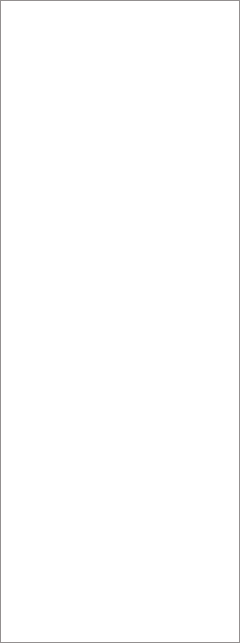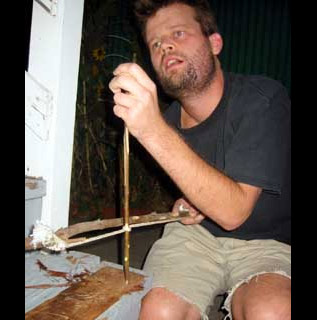Easy, Illustrated Instructions on How to Load a Dishwasher
The dishwasher is a simple machine. It is a watertight plastic box where hot water and detergent get sprayed around for 30 or 40 minutes, knocking all the dried juice, gravy and rice off of your dishes.
Probably the most impressive engineering feat in a dishwasher is that door opens from the bottom, but is able to keep the maelstrom of hot water from leaking out.
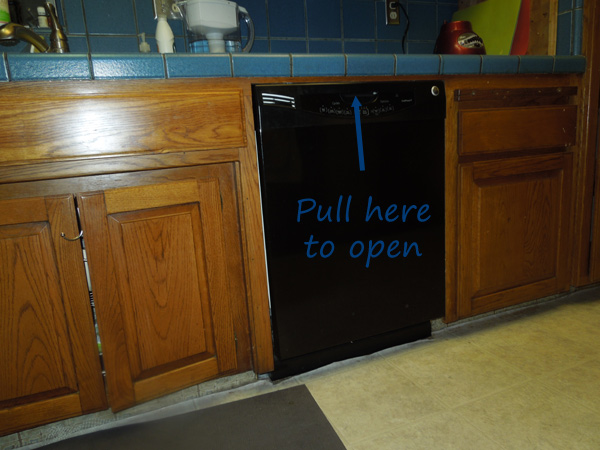
There are almost always two racks for dishes which slide in and out. There is almost always a black metal loop at the bottom which heats up. There is almost always a little spring-loaded trapdoor to hold the detergent.

How to Load the Dishwasher
It probably isn't going to matter how you arrange your dishes in there. During the dishwashing cycle, the inside of a dishwasher is like a scene out of The Last Airbender. Water is going koo-koo crazy inside the box, spraying everywhere at high pressure. It's like three garden hoses spraying everything in there all at once. The only way something is not going to get washed is if you completely block the water from something by creating a spray-proof umbrella for it with another dish.
Nevertheless, there is a traditional way to load the dishwasher, and if you took the time to find this article, I should tell you what that is.

Where to put the Dishes
The plates and eating utensils go on the bottom rack. The cups and cooking utensils go in the top.
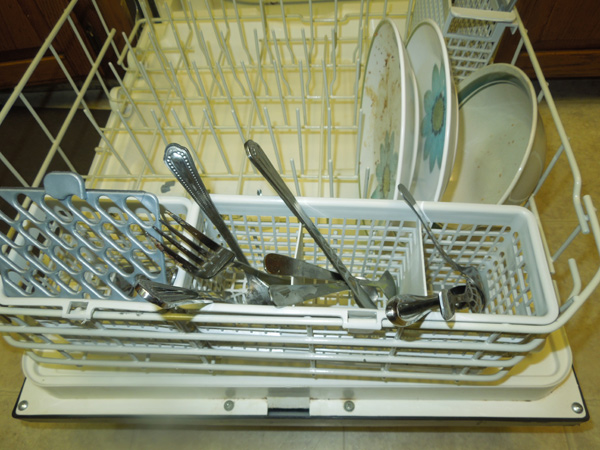
Stand the plates up on their edge. The explosion of water eminates from the center of the machine, so it is best to put large plates and plastic cutting boards towards the outside edge, with smaller plates more towards the center. The arrangement should be kind of like setting up the perfect audience at a concert in the middle of a crowd. Everyone needs to be able to see the water spray.
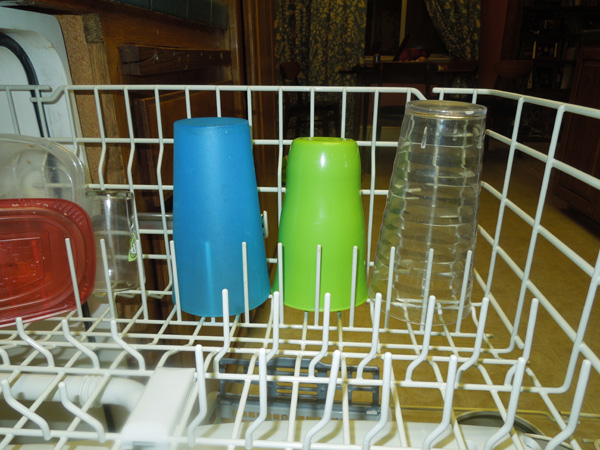
Cups should be placed upside-down so that the wash water falls out of them easily. Also face bowls and ladles down. Any item with a concave surface facing up will collect gross wash water during the wash cycle. This is nearly unavoidable, because poorly-designed mugs have a rim along the bottom without any exits for water.
Be cautious with wine glasses and delicate glassware. Two glasses next to one another might get pushed around enough to break, but I've never actually experienced that. Probably because I usually drink my wine out of a Big Gulp cup.
Don't put silverware which is really silver into the dishwasher. Nor aluminum pots. The surface of aluminum pots will oxidize and probably ruin the appearance of the finish.
Be sure that the dirty dishes aren't stacked in such a way that they prohibit the circular spinning "spray arms". Dishwashers have 1, 2 or three of these arms. I don't think anything bad happens if they can't spin freely, they just don't clean the dishes as well. The spray arms are usually powered by the force of the water pressure, so there isn't any danger of stripping gears off or burning out the spray arm motor, because there aren't any.
The dishwasher might not clean everything off of everything.
Most people scrape or rinse off their dishes before they load them into the dishwasher. Every dishwasher is different, so experiment to see what your washer can take care of and what kind of stuff you have to scrape off yourself. I tend to keep pots and pans out of the dishwasher because they take up so much space, but they can also be troublesome for the washer.
There is also a chance that left over food pieces will clog the exit drain from the dishwasher. The drain is only about as big around as your thumb, so it can clog. Remove onion pieces, spaghetti, anything larger than a pea.
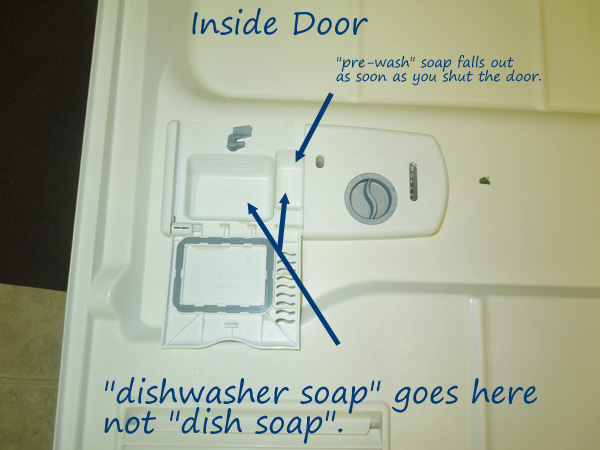
Dishwasher soap isn't really soap. There is so much water splashing around inside that real soap would be a dense foam inside. That kind of foam would take forever to drain from the dishwasher at the end of the cycle. Also, the bubbles would tend to slow down the tsunami of spraying going on inside. Dishwasher detergent is grainy.. uh, something (sodium carbonate and sodium silicate). It is more of an abrasive than a surfactant. Don't put regular dish soap into the dishwasher. If you are out of dish detergent, try running it without any soap at all.
After the dishwasher is loaded, and the soap is inside, shut the door. Turn the dial to the beginning of the "wash" instructions, or push "start regular wash" on the exterior. Sometimes the buttons are tucked up on the very top of the dishwasher door, just below the counter level. If your dishwasher has a dial control, and you turn past the wash you want, you will proabaly need to turn it completely around the dial, because you usually can't turn these control knobs backwards.
Turning the knob past the wash section may cause the soap door to pop open prematurely. Don't worry about it. The dishes will still be washed.
Good luck! For many families, the automatic dishwasher is the family's favorite appliance!





